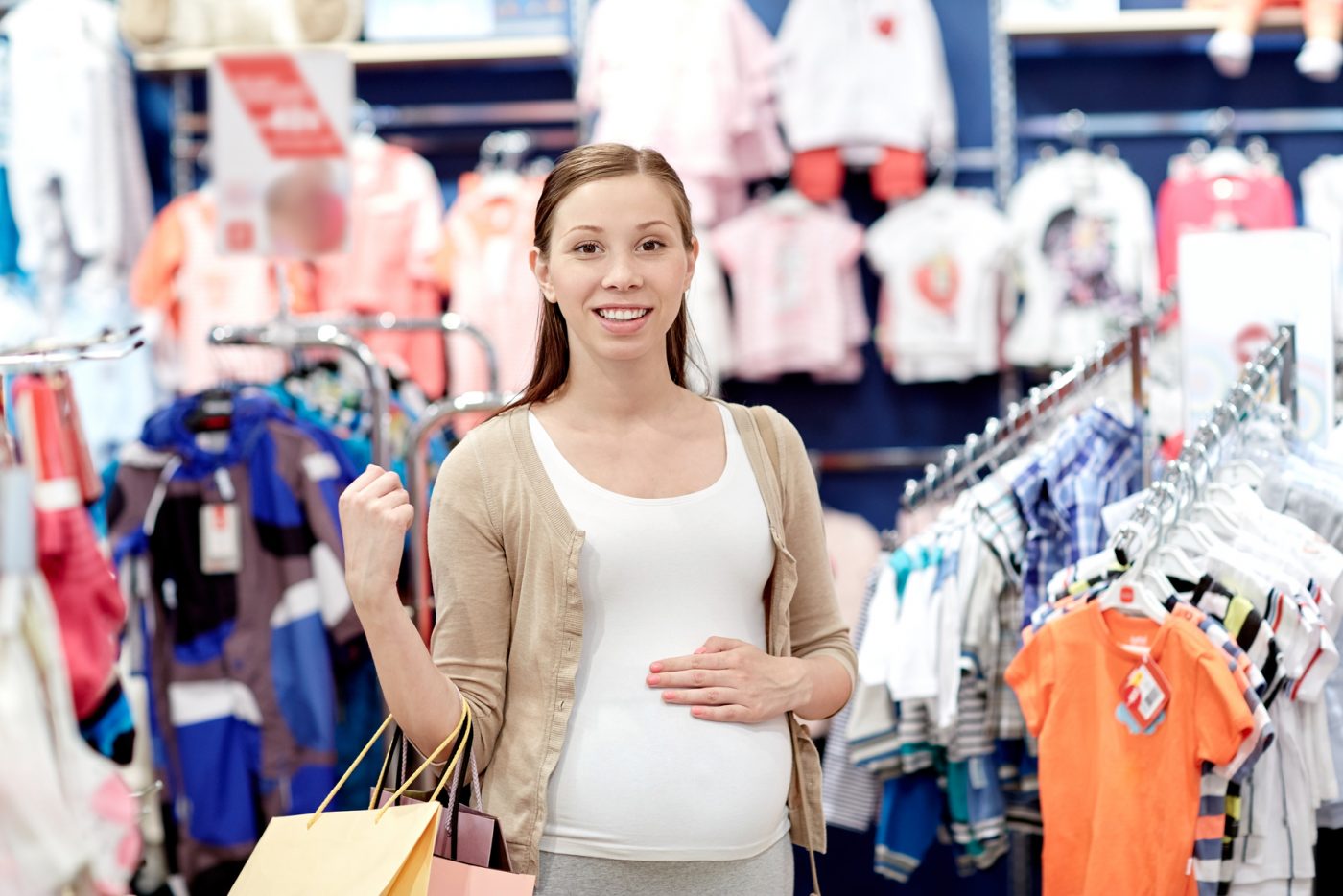
In short - it's whenever you feel like it - or not!
Usually around 14-16 weeks.It varies quite a lot from woman to woman and how you are carrying your bump and what’s happening with your breasts as to when you’ll no longer fit into your normal clothes. It’s usually sometime in the second trimester around 14-16 weeks and often at the end of the first trimester for women pregnant with their 2nd or 3rd baby.
So the short answer is, whenever you feel like it! Or not!
Remember, Kate Moss wearing her regular jeans with the zipper open? Those jeans were her choice of maternity clothes, and very cool she looked too.
Most of us won’t be quite so brave as to go around wearing unzipped jeans, however, and we’ll certainly have grown out of our normal clothes by around the second trimester.
Jeans or loose trousers with an elasticated top are great, much more comfortable than firm trousers with buttons or zips.
Tops that you can use to breastfeed with after the birth are a good idea.
Normal clothes in bigger sizes work just as well, you don’t have to buy special maternity clothes if you don’t like them.
However, if your pregnant shape is all bump you may find that bigger sizes are too big for e.g. your shoulders, so always try things on.
If your partner is bigger than you, wear their clothes for a while. This can be a good option in summer with a lovely cotton shirt.
Your feet might expand or grow, especially after the birth so you might need to invest in some new shoes. In general, don’t spend too much (unless you really want to) since you’ll only be wearing them for a short while. However, it can really give women the confidence to have an outfit that really celebrates their new shape so don’t feel that weddings and special events mean you have to hide under a tent-like dress.
You can wear open trousers or skirts by using a belly button or a bump band (a simple device made from a piece of elastic with a button at either end, a hair scrunchy can also work) to widen the waistband. Wear a long tee-shirt, a jumper pulled down over it, or a Bellyband (a wide stretchy band worn right around your waist) to hide the gape.
Gently stretchy fabric containing lycra will be useful since you can wear it for your various sizes.
Some people like to avoid fabrics treated with chemicals during their pregnancies (i.e. Wrinkle free or Permanent Press).
Maternity bras are one item that is definitely worth investing in. Best not to have an underwired bra, but if you really prefer them, get a nice flexible one approved by a lactation consultant. If you are watching your spending, you can get fitted for a nursing bra while you are pregnant and wear that (though you may find that you need a bigger size in the weeks just after your baby is born and your milk comes in).
There is so much choice nowadays from haute couture to supermarket brands to non-maternity clothes that you should try to enjoy dressing for your new shape.
More top tips on managing at work are presented here by our expert doula and pregnancy osteopath, Avni.